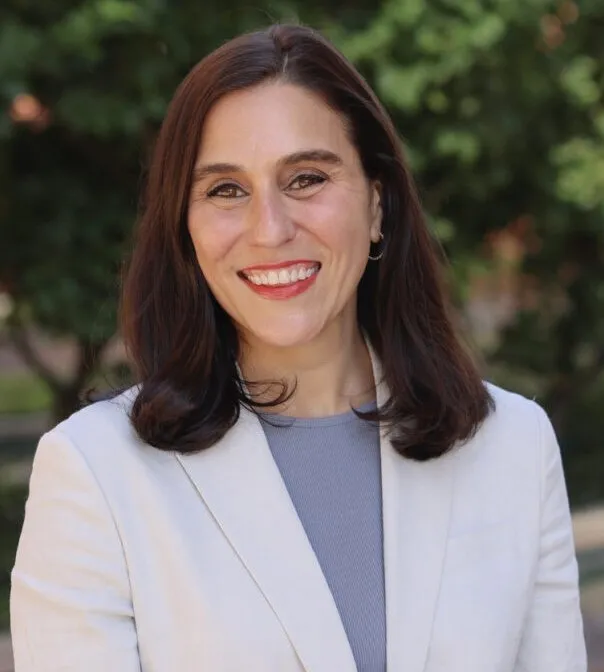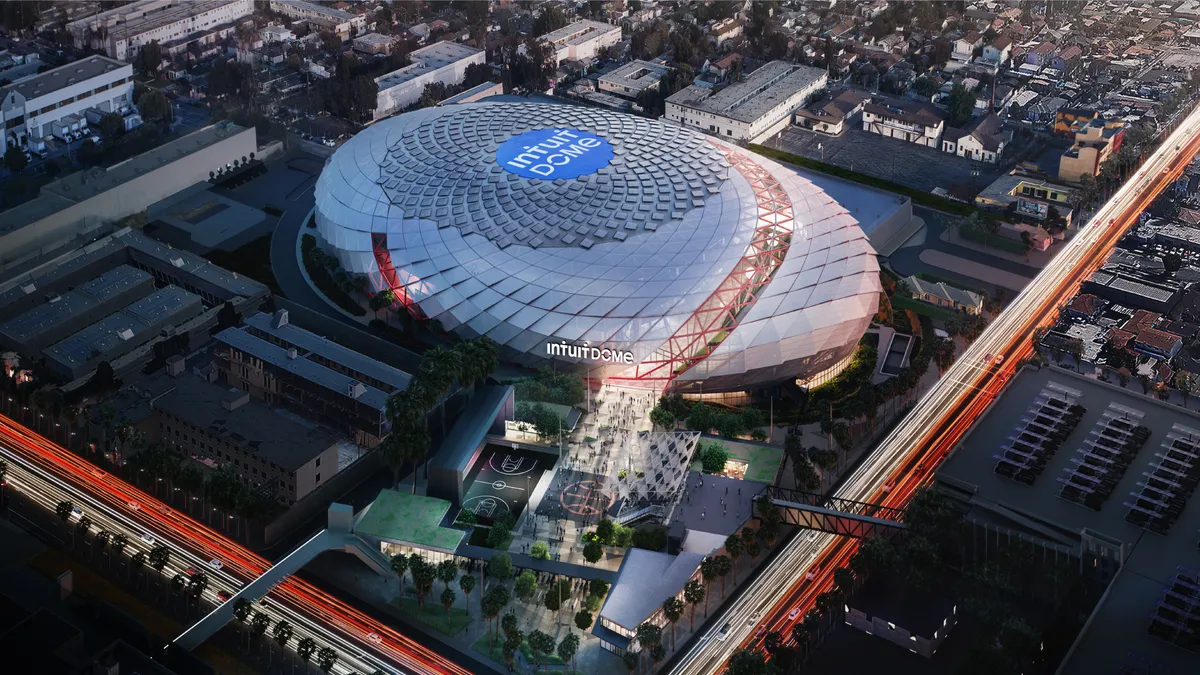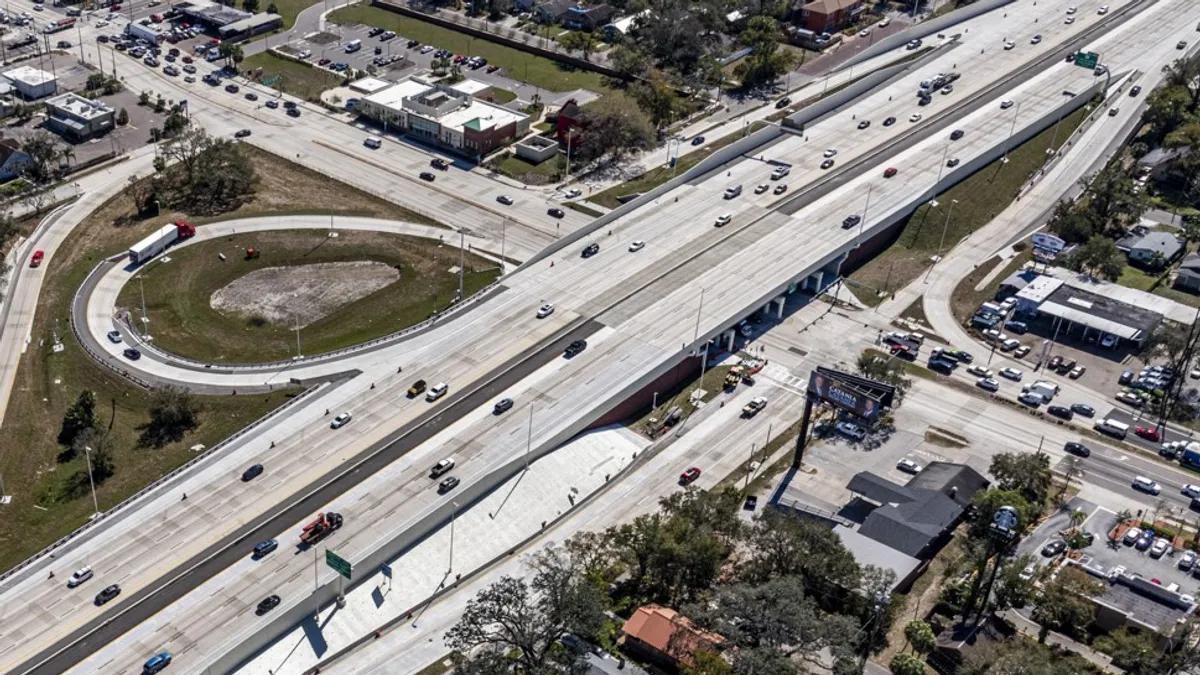Jill Kurth sees unique opportunities to build resilient, environmentally friendly and fair-minded infrastructure in Southern California right now.
As AECOM’s Los Angeles Metro executive and strategy and growth leader, Kurth wants the construction industry to embrace AI and other building tech in order to decarbonize and adapt to extreme weather and other climate challenges.
“An equitable, green future requires us to work together, partner together, create pathways, and leverage technology in new and different ways,” said Kurth in an AECOM news release.

Dallas-based AECOM tapped Kurth in October to head up the LA region, which counts the city and county of Los Angeles, the LA Department of Water & Power, LA Metropolitan Transportation Authority, LA World Airports and the 2028 Olympic and Paralympic Games as clients.
“In my new role I’m excited to help transform LA’s future and advance AECOM’s work and strategic pursuits in this area,” said Kurth in an email interview with Construction Dive.
Here, Kurth talks with Construction Dive about opportunities in the Southern California market, procurement strategy in light of inflation and supply chain snarls, plus creative electrification and other mega-infrastructure trends.
This interview has been edited for brevity and clarity.
CONSTRUCTION DIVE: What’s unique about LA’s building market, and Southern California more broadly? What are the biggest infrastructure needs?
JILL KURTH: Progressive policy goals around climate adaptation are driving regionwide mega-infrastructure projects: decarbonization, electrification and preparedness for more frequent and extreme climate events are at the forefront. It’s a public safety issue.
Infrastructure modernization programs must deliver on multi-faceted goals: not only adapting to climate change, but providing critical infrastructure to underserved communities. Creating social value is paramount.
Securing Southern California’s water future is imperative — it’s safe to say we’re having a “Mulholland moment” for infrastructure. There is a major need for initiatives at the regional scale to recycle wastewater, reuse water, capture stormwater to recharge basins and ocean desalination, many of which are already underway.
What do you think builders should know about the economy right now?
Procurement strategy is rapidly evolving in response to inflation and post pandemic global supply chain dynamics.
We’re observing our clients proactively establishing relationships with manufacturers and centralizing and expanding their procurement capabilities. Risk is being transferred from contractors to our clients as they race to secure machinery, equipment and materials in bulk.
This competitive landscape, coupled with Build America, Buy America requirements, are changing the manufacturing landscape practically overnight.
What are some of the trends you see in the green building space?
The Port of LA and Port of Long Beach have been long committed to clean air initiatives. Post-COVID, the ports and marine sector is enjoying an influx of private equity that is accelerating decarbonization and electrification from ship to shore.
Port tenants are now funding their own construction, preferring to fund, design and build their tenant improvements on their own. That’s coupled with once-in-a-generation public funding due to the Infrastructure Investment and Jobs Act.
We’re also seeing big, energy intensive use infrastructure like dams and wastewater treatment plants implementing the Envision Framework by the Institute for Sustainable Infrastructure. I think we’ll see creative strategies on how to electrify purpose-built infrastructure, like hospitals, data centers and large manufacturing while providing mission-critical resilience and redundancy.
Is there new building tech you’re excited about?
Technology advancing the electrification of buildings is one that I’m excited and hopeful about. Today, buildings are one of the biggest contributors to climate change in the U.S.
Building modernization is not only about providing comfort and amenities, but also reducing the building’s carbon footprint. Technologies like high-efficiency chillers, thermal energy storage and building automation have the potential to drastically reduce buildings’ impact on the environment, provide resiliency and create value.
What has been your favorite project or partnership?
That’s difficult to choose! Any project or partnership that improves the quality of life for all while protecting our planet is my favorite. One that I’m currently excited about is the new home of the LA Clippers, the Intuit Dome, which is set to open next year. It’s one of the most technically advanced stadiums in the world, enhancing fan immersion and an advanced retail experience.
From a construction standpoint, it’s so exciting. We’re using LIDAR and drones for real-time 3D mapping and surveying, holding coordination meetings in virtual reality, using AI to manage water quality and optimize operations and having first-in-our-country zero-emissions units operating on tracks in Southern California. It’s a thrilling time to see creativity, technology, engineering and construction come together in this space.





















